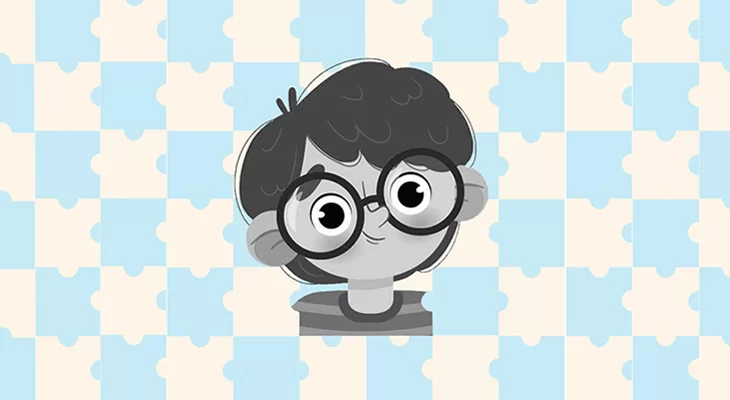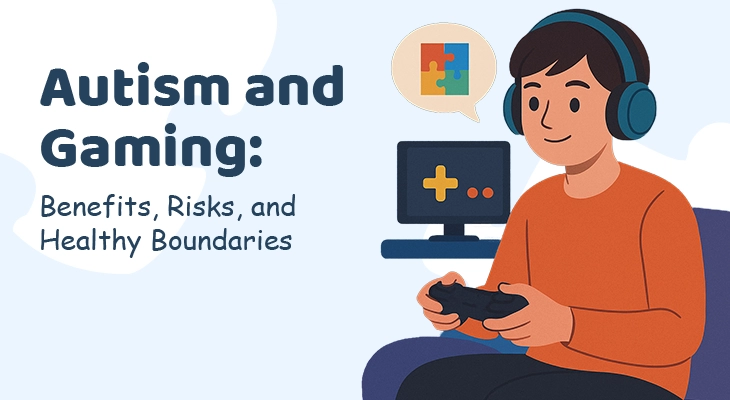Introduction
Children with autism spectrum disorder (ASD) often experience heightened emotions and can struggle to regulate their behavior. These challenges can manifest in various ways, including meltdowns, anxiety, and difficulty participating in daily activities.
This blog post explores effective calming strategies that can help children with autism manage their emotions and navigate challenging situations. By understanding these techniques and incorporating them into daily routines, parents and caregivers can provide valuable support and promote their child’s well-being.
Let’s delve into the world of calming strategies for autism and discover how they can make a positive impact on the lives of children with autism. For a broader understanding of autism, you can refer to our comprehensive introduction to autism spectrum disorder.

Download Download & share this infograph card in your network [Free Download]
Sensory Based Strategies
Children with autism often experience heightened sensory sensitivities or differences, which can contribute to anxiety, stress, and behavioral challenges. Sensory-based strategies aim to provide a controlled and predictable sensory environment, helping individuals with autism regulate their senses and reduce anxiety. Some effective techniques include:
-
Weighted Blankets
The gentle pressure from a weighted blanket can provide a calming sensation, reducing anxiety and promoting relaxation. They can also help kids with autism sleep better at night.
-
Fidget Toys
These tactile tools offer a discreet way to channel sensory energy and provide a sense of calm.
-
Chewable Toys
Oral stimulation can be beneficial for individuals who seek sensory input through their mouths.
-
Swings And Rocking Chairs
Rocking motions can be calming and help regulate the vestibular system, which plays a role in balance and spatial awareness. The rhythmic motion of swings and rocking chairs can induce a sense of relaxation and reduce anxiety.
-
Music Therapy
Music can have a profound impact on mood and emotions, providing a sense of comfort and relaxation. It can also facilitate communication and expression for individuals who may struggle with verbal language.
-
Sensory Bins
Sensory bins filled with various materials (e.g., sand, water, rice, beans) allow for tactile, visual, and auditory exploration. Engaging with sensory bins can help individuals regulate their senses and improve sensory processing.
-
Nature Walks
Nature walks provide opportunities for sensory exploration, such as observing plants, listening to birds, and feeling the breeze. Spending time in nature can be soothing and reduce stress.
For more detailed guidance on sensory issues and autism, check out our Sensory Issues and Autism – all you need to know guide for parents and caregivers.
Since you are reading this blog, you may also be interested in:
Behavioral Techniques
Behavioral strategies can be powerful tools for helping children with autism manage their emotions and behaviors. By understanding and implementing effective techniques, parents and caregivers can create a supportive environment that promotes calm and well-being. Some effective strategies include:
-
Visual Schedules
Visual schedules are visual representations of daily routines or activities, often using pictures or symbols to represent each step. Visual schedules can help children with autism understand what to expect, reduce anxiety, and promote independence. They can also help with transitions between activities.
-
Social Stories
Social stories are personalized stories that explain social situations and expectations. They can be used to teach social skills, reduce anxiety, and improve understanding of social cues. Use simple language and visual support to enhance understanding.
-
Positive Reinforcement
Positive reinforcement involves rewarding desired behaviors to increase the likelihood that they will occur again. Be specific and consistent in your praise, and ensure rewards are meaningful and motivating.
-
Establish Routines
Routines provide a sense of predictability and can reduce anxiety for children with autism. Break down daily activities into smaller, manageable steps and create a visual schedule to represent the routine.
For more insights into effective parenting strategies, explore our blog on parenting strategies for children with autism.
Breathing And Relaxation Techniques
Breathing and relaxation techniques can be powerful tools for managing stress, anxiety, and sensory overload in children with autism. By teaching your child these techniques, you can help them develop coping mechanisms and improve their overall well-being. Some popular strategies that can be incorporated into daily routines are:
-
Deep Breathing Exercises
Deep breathing exercises can help calm the mind and body, reducing stress and anxiety.
-
Progressive Muscle Relaxation
This technique involves tensing and relaxing different muscle groups throughout the body. It can help reduce physical tension and promote relaxation.
-
Mindfulness Techniques/ Meditation
Mindfulness involves focusing on the present moment without judgment.
For more information on autism and social anxiety, you might find our autism and social anxiety – an overview helpful.
Physical Activity and Movement
Physical activity is not only beneficial for overall health but can also have a significant impact on the well-being of individuals with autism. Engaging in regular exercise can help reduce stress, improve mood, and enhance cognitive function.
In this section, we will explore the various ways physical activity can benefit children with autism. From yoga and stretching to exercise and dance, there are numerous options to suit different interests and abilities.
-
Exercise
Regular exercise has been shown to improve mood and reduce symptoms of depression. Besides, exercise can promote better sleep quality.
-
Yoga and Stretching
Yoga fosters a connection between the mind and body, promoting relaxation and focus. While yoga can improve body awareness, gentle yoga poses and deep breathing can help manage stress and anxiety.
-
Dance
Dance can be a powerful way for individuals with autism to express themselves and release emotions. Besides, dance can also stimulate various senses, such as sight, sound, and touch.
For a better understanding of early interventions that can make a significant difference, consider reading our blog on the importance of FRAT in early intervention in autism.
Frequently Asked Questions (FAQs)
Do you have questions about calming strategies for your child with autism? This section addresses some of the most frequently asked questions to provide you with valuable information and guidance. Let’s explore common concerns and find answers that can support you and your child’s journey.
-
What is the best calming strategy for my child?
The most effective calming strategy will vary depending on your child’s individual needs and preferences. It’s important to experiment with different techniques to find what works best.
-
How long does it take for calming strategies to work?
The effectiveness of calming strategies can vary. Some autistic children may experience immediate benefits, while others may need consistent practice over time.
-
How often should I use calming strategies with my child?
Incorporate calming strategies into your child’s daily routine to help them manage stress and anxiety proactively. The frequency may vary depending on your child’s individual needs and the severity of their symptoms.
-
Can calming strategies be used in conjunction with other therapies?
Yes, calming strategies can be integrated with other therapies, such as applied behavior analysis (ABA) or speech therapy, to provide a comprehensive approach to autism treatment.
-
How can I help my child learn and practice calming strategies?
Start by modeling calming techniques yourself. Break down complex techniques into smaller, manageable steps. Use positive reinforcement to encourage your child to practice these strategies.
-
What if my child resists calming strategies?
Be patient and persistent. Introduce calming strategies gradually and make them enjoyable. If your child is resistant, try different approaches or consult with a therapist for additional guidance.
-
Are there any side effects to using calming strategies?
Most calming strategies are safe and usually do not have side effects. However, it’s always a good idea to consult with your child’s healthcare provider before starting new techniques.
For more advice and support, explore our blog on what autism has taught me as a parent.
Conclusion
Calming strategies are essential tools for supporting children with autism. By understanding and implementing these techniques, parents and caregivers can create a more peaceful and supportive environment.
Remember, every child is unique, and what works for one may not work for another. It’s important to experiment with different strategies and find what best suits your child’s individual needs.
By combining calming techniques with appropriate medical interventions, you can provide your child with the best possible support for their well-being.
For more in-depth information on how FRAT® can play a role in autism, you may want to read our article on What is FRAT® and the role FRAT® plays in Autism.







